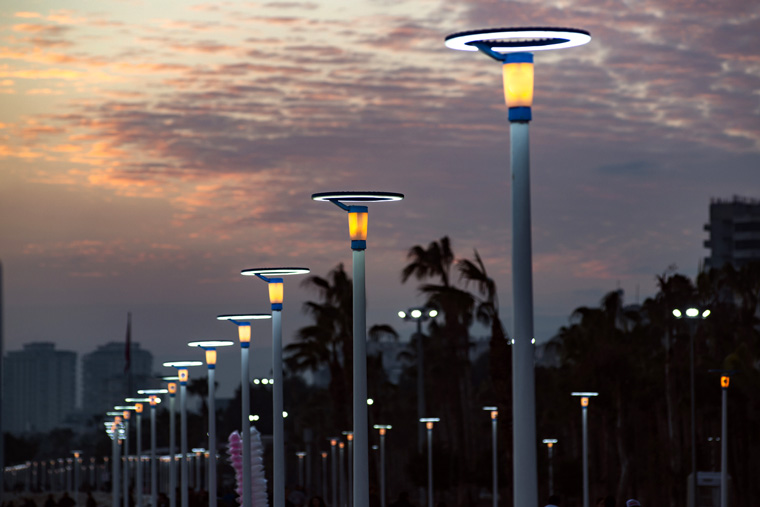NEW YORK — According to Technavio, the global LED lighting market size is estimated to grow by USD 34.82 billion from 2022 to 2027. The market is expected to grow at a CAGR of 7.35% during the forecast period. Moreover, the growth momentum will accelerate. APAC will account for 43% of the growth of the global market during the forecast period.
Global LED lighting market – Five forces
The global LED lighting market is fragmented, and the five forces analysis covers –
- Bargaining power of buyers
- The threat of new entrants
- Threat of rivalry
- Bargaining power of suppliers
- Threat of substitutes
- For interpretation of Porter’s five forces model – click here to buy the report.
Global LED lighting market – Customer landscape
The report includes the market’s adoption lifecycle, from the innovator’s stage to the laggard’s stage. It focuses on adoption rates in different regions based on penetration. Furthermore, the report also includes key purchase criteria and drivers of price sensitivity to help companies evaluate and develop their growth strategies.
Global LED lighting market – Segmentation assessment
Segment overview
Technavio has segmented the market based on application (residential, commercial, outdoor, industrial, and others) and product (luminaries and lamps).
- The residential segment will grow at a significant rate during the forecast period. The growth of this segment is attributed to increasing urbanization and rising energy efficiency requirements. Many consumers prefer personalized home decoration, including LED lights. In addition, governments of several countries offer support for LED lighting, as it is energy efficient when compared to traditional lights. Moreover, with the increasing number of smart cities, many vendors have started to provide LED lighting systems. This, in turn, will drive the sales of LED lights worldwide, which will fuel the growth of the residential segment of the market during the forecast period.
Geography overview
Based on geography, the global led lighting market is segmented into APAC, Europe, North America, Middle East and Africa, and South America. The report provides actionable insights and estimates the contribution of all regions to the growth of the global led lighting market.
- APAC is estimated to account for 43% of the growth of the global market during the forecast period. The growth of the regional market is attributed to the increasing demand for energy-efficient lighting solutions from the residential and commercial segments. The region has become a hub for retail, hospitality, and healthcare industries, as many companies are setting up their offices in APAC. China is the major revenue-contributing country in the market owing to the presence of many LED lighting manufacturing units and industries.
Global LED lighting market – Market dynamics
Key factor driving market growth
- The declining manufacturing cost of LED lights is driving the market growth.
- The reduction in LED production costs lowers the initial installation costs of LED lamps and lanterns, which accelerates the installation of new LED lamps and lanterns.
- Moreover, governments are providing subsidies for semiconductor equipment, such as metal-organic chemical vapor deposition (MOCVD), which is used to manufacture LEDs. This has encouraged LED manufacturers to increase their LED production capacity.
- These factors will fuel the growth of the market during the forecast period.
Leading trends influencing the market
- The emergence of smart cities is a key trend in the market.
- The energy conservation and resource management initiatives by various governments are promoting the development of smart cities.
- Smart lighting helps save energy, has shorter switching times, and reduces costs. Intelligent lighting systems increase the energy efficiency of cities. Street lights use innovative lighting solutions that automatically implement traffic-based brightness control, remote light control, error reporting, theft prevention, tracking of street light power cords, and remote meter reading.
- Thus, the application of intelligent lighting can significantly save electricity, improve public lighting control systems, and save maintenance costs.
- These factors will support the growth of the market during the forecast period.
Major challenges hindering market growth
- The limited thermal tolerance of LEDs installed in industrial facilities will challenge the market growth.
- The light efficiency of LEDs degrades when they are exposed to high temperatures, high humidity, and other extreme environments.
- When used in an enclosed space, LEDs can negatively affect the light output.
- A high internal temperature can result in premature failure of LEDs.
- These factors will hinder the growth of the market during the forecast period.
Drivers, trends, and challenges have an impact on market dynamics, which can impact
businesses.
What are the key data covered in this LED lighting market report?
- CAGR of the market during the forecast period
- Detailed information on factors that will drive the growth of the LED lighting market between 2023 and 2027
- Precise estimation of the size of the LED lighting market and its contribution to the parent market
- Accurate predictions about upcoming trends and changes in consumer behavior
- Growth of the LED lighting market across APAC, Europe, North America, Middle East and Africa, and South America
- A thorough analysis of the market’s competitive landscape and detailed information about vendors
- Comprehensive analysis of factors that will challenge the growth of LED Lighting Market vendor
Tagged with lightED, research
